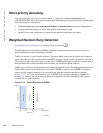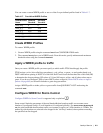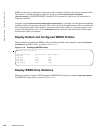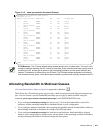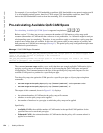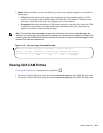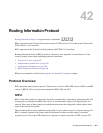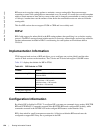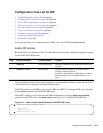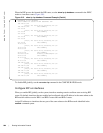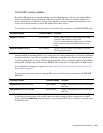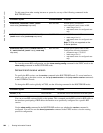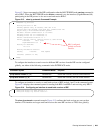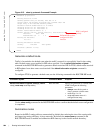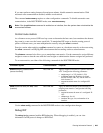
878 | Routing Information Protocol
www.dell.com | support.dell.com
RIP must receive regular routing updates to maintain a correct routing table. Response messages
containing a router’s full routing table are transmitted every 30 seconds. If a router does not send an update
within a certain amount of time, the hop count to that route is changed to unreachable (a route hop metric
of 16 hops). Another timer sets the amount of time before the unreachable routes are removed from the
routing table.
This first RIP version does not support VLSM or CIDR and is not widely used.
RIPv2
RIPv2 adds support for subnet fields in the RIP routing updates, thus qualifying it as a classless routing
protocol. The RIPv2 message format includes entries for route tags, subnet masks, and next hop addresses.
Another enhancement included in RIPv2 is multicasting for route updates on IP multicast address
224.0.0.9.
Implementation Information
FTOS supports both versions of RIP and allows you to configure one version globally and the other
version or both versions on the interfaces. The C-Series and E-Series both support 1,000 RIP routes.
Table 42-1 displays the defaults for RIP in FTOS.
Configuration Information
By default, RIP is disabled in FTOS. To configure RIP, you must use commands in two modes: ROUTER
RIP and INTERFACE. Commands executed in the ROUTER RIP mode configure RIP globally, while
commands executed in the INTERFACE mode configure RIP features on that interface only.
RIP is best suited for small, homogeneous networks. All devices within the RIP network must be
configured to support RIP if they are to participate in the RIP.
Table 42-1. RIP Defaults in FTOS
Feature Default
Interfaces running RIP Listen to RIPv1 and RIPv2
Transmit RIPv1
RIP timers update timer = 30 seconds
invalid timer = 180 seconds
holddown timer = 180 seconds
flush timer = 240 seconds
Auto summarization Enabled
ECMP paths supported 16



